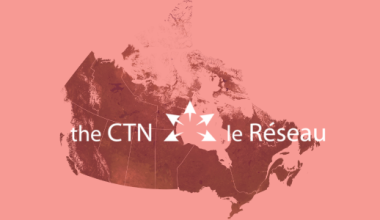CTN researchers part of global strategy to find a cure
The CTN’s Vaccines and Immunotherapies (VIT) Core led by Drs. Jonathan Angel and Jean-Pierre Routy and several prominent CTN researchers are looking at multiple strategies of eradication by tapping into the viral reservoirs.
Current antiretroviral regimens are very potent for controlling HIV, however, ART is not a complete remedy because it does not eliminate the source of persistent infection – the so-called viral reservoirs. “One of the biggest obstacles to curing HIV is posed by viral reservoirs, cells harboring latent or non-replicating HIV,” says Dr. Jean-Pierre Routy.
The CanCURE Initiative
In support of HIV cure and remission initiatives, Drs. Angel and Routy have joined with the Canadian HIV Cure Enterprise (CanCURE) under the leadership of Dr. Eric Cohen (Institut de recherches cliniques de Montréal (IRCM). Funded by CIHR to the tune of $8.75 million over five years, the CanCURE group consists of Canadian HIV researchers, including 26 basic and clinical scientists and a knowledge user who brings the perspective of the community living with HIV.
The goal of CanCURE is to contribute to the development of a sterilizing and/or functional HIV cure through an accessible, interactive, and coordinated scientific program that connects relevant stakeholders and complements current international and Canadian research efforts.
Through four research themes, CanCURE will focus on the role of macrophages (long-lived cells that engulf and digest foreign pathogens and infected cells). “While extensive efforts have been deployed in the direction of eliminating HIV resting CD4+ T-cell reservoirs, much less is known about the contribution of monocytes-macrophages to the overall HIV reservoir,” says Dr. Eric Cohen, the principal investigator for CanCURE. “Once new candidates that eliminate persistent HIV infection are identified in pre-clinical studies, we will move onto HIV cure clinical trials,” adds Dr. Jean-Pierre Routy.
Pediatric HIV: Exploring determinants of a functional cure
Drawing on the 2013 case study of the Mississippi baby and the apparent “functional cure” of an HIV infant, a new CTN study, funded by CIHR, led by Dr. Hugo Soudeyns (Centre de recherche du CHU Sainte-Justine) with co-investigators including Drs. Ari Bitnun and Jason Brophy are exploring the determinants of a functional cure in children who were born HIV-positive (CTN S 281). The objective of this study is to determine whether early initiation of ART in cases of vertical (mother-to-child) transmission results in the failure to establish a significant HIV reservoir. This setting could potentially provide a “functional cure” or a state of HIV remission that could be controlled without drugs.
The research team includes basic scientists and clinicians based in multiple centers across Canada who are presently involved in pediatric HIV research and care (Canadian Pediatric AIDS Research Group (CPARG)). The research program will generate a comprehensive overview on whether preventing reservoir establishment using ART is an effective means of achieving a functional cure in children. A secondary objective of the study is to determine differences in pathogenic mechanisms of HIV in individuals with developing immune systems.
Other studies aiming to reduce viral reservoirs and viral eradication
Through the 2013 CTN Funding Opportunity, Dr. Mario Ostrowski (University of Toronto) is being supported to carry out a proof-of-concept study with a therapeutic DNA vaccine (InovioPennvax-GP vaccine) delivered via an electrical pulse (CTNPT 020). The study aims to show that enhancing HIV-specific T cell immunity, particularly the HIV-specific CD8+ T cell response, can have an impact on HIV reservoirs in ART-treated individuals, with the goal to eliminate HIV from reservoirs.
CTNPT 020 will begin in 2014 recruiting individuals most likely to benefit from the proposed intervention: patients who started therapy within six months of acquiring HIV and who have been on therapy at least six months. “These individuals still have substantial preservation of HIV-specific immune responses, and relatively lower viral reservoirs compared to those treated during chronic established infection,” says Dr. Ostrowski.
Immune activation
Along with studies looking directly at viral reservoirs, other studies within the VIT Core are testing strategies to enhance the capacity of the host immune response to control viral replication. Persistent inflammation and immune activation despite years of successful ART have been associated with non-AIDS events including cardiovascular, kidney, liver diseases, and cancers. In addition, the level of immune activation is associated with lower HIV specific control and higher viral reservoirs. One currently enrolling pilot study is CTNPT 006 – the Niaspan study examines the role of extended release niacin on immune activation, which may enhance CD4 recovery and improve neurocognitive functions.
Capacity building and the path forward
Cure research is a dynamic field and the science is rapidly evolving. Being linked with the IAS Towards a Cure, CanCURE and other cure research initiatives, CTN researchers are part of a global strategy that calls for the collaboration of multidisciplinary teams of basic, clinical, and translational researchers to develop strategies to push HIV disease into remission or to cure it.






